Fiberglass and Other Flame-Resistant Fibers in Mattress Covers
- PMID: 35162717
- PMCID: PMC8835476
- DOI: 10.3390/ijerph19031695
Fiberglass and Other Flame-Resistant Fibers in Mattress Covers
Abstract
Public complaints have raised concerns that some mattresses in the current marketplace may be potential sources of airborne fiberglass. Although mattress foam is often marketed as chemical-free, their cover compositions are not as well understood by the general public. To fill these basic information gaps, the covers of four newly purchased mattresses were sampled and analyzed using polarized light microscopy, SEM-EDS, and FTIR microspectroscopy. Two of the mattress covers contained over 50% fiberglass in their inner sock layers. Up to 1% of the fiberglass had migrated to adjacent fabric layers, representing a potential risk of consumer exposure if the zipper on the outer cover is opened. The observed fiberglass fragments had calculated aerodynamic diameters ranging between 30 and 50 µm, suggesting they are potentially inhalable into the nose, mouth, and throat, but are likely too large to penetrate deeper into the lungs. No fiberglass was observed on the brand new mattresses' outer surfaces. Synthetic fibers also present in the sock layers were consistent with flame resistant modacrylic containing vinyl chloride and antimony. The use of fiberglass and other chemicals in mattress covers poses a potential health risk if these materials are not adequately contained. The apparent non-inclusion of mattress covers in chemical-free certifications suggests that further improvements are needed in mattress labeling and education of consumers.
Keywords: exposure assessment; fiberglass; flame retardants; mattresses.
Conflict of interest statement
The authors declare no conflict of interest.
Figures
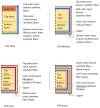




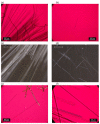
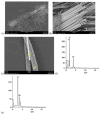
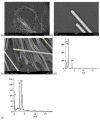
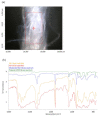
Similar articles
-
Evaluation of cot mattress inner foam as a potential site for microbial generation of toxic gases.Hum Exp Toxicol. 2000 Dec;19(12):693-702. doi: 10.1191/096032700670028460. Hum Exp Toxicol. 2000. PMID: 11291741
-
Crib Mattress Investigation: A quality improvement study to assess mattress cover permeability and bacterial growth in crib mattresses.Am J Infect Control. 2016 Jul 1;44(7):837-9. doi: 10.1016/j.ajic.2015.12.014. Epub 2016 Feb 5. Am J Infect Control. 2016. PMID: 26856469
-
Comparison of interface pressures measured at the sacrum while resting upon two types of foam mattresses and between platilon and plastic mattress covers.Age Ageing. 1991 Jul;20(4):267-70. doi: 10.1093/ageing/20.4.267. Age Ageing. 1991. PMID: 1927733
-
Systematic reviews of wound care management: (5) beds; (6) compression; (7) laser therapy, therapeutic ultrasound, electrotherapy and electromagnetic therapy.Health Technol Assess. 2001;5(9):1-221. doi: 10.3310/hta5090. Health Technol Assess. 2001. PMID: 11368833 Review.
-
Alternating pressure (active) air surfaces for preventing pressure ulcers.Cochrane Database Syst Rev. 2021 May 10;5(5):CD013620. doi: 10.1002/14651858.CD013620.pub2. Cochrane Database Syst Rev. 2021. PMID: 33969911 Free PMC article.
References
-
- NIOSH Criteria for a Recommended Standard: Occupational Exposure to Fibrous Glass—DHHS (NIOSH) No. 77. [(accessed on 31 January 2022)];1997 Available online: https://www.cdc.gov/niosh/docs/77-152/default.html.
-
- Moitra S., Tabrizi A.F., Machichi K.I., Kamravaei S., Miandashti N., Henderson L., Mukherjee M., Khadour F., Naseem M.T., Lacy P., et al. Non-Malignant Respiratory Illnesses in Association with Occupational Exposure to Asbestos and Other Insulating Materials: Findings from the Alberta Insulator Cohort. Int. J. Environ. Res. Public Health. 2020;17:7085. doi: 10.3390/ijerph17197085. - DOI - PMC - PubMed
-
- IARC (International Agency for Research on Cancer) Man-Made Vitreous Fibers, Volume 81. [(accessed on 31 January 2022)]. Available online: https://publications.iarc.fr/Book-And-Report-Series/Iarc-Monographs-On-T....
MeSH terms
Substances
LinkOut - more resources
Full Text Sources

